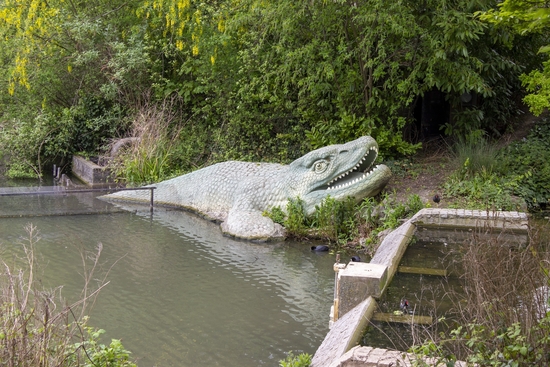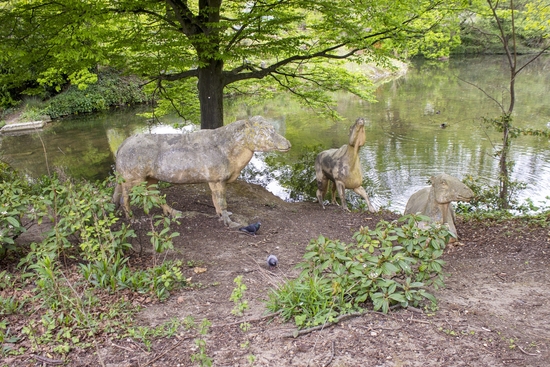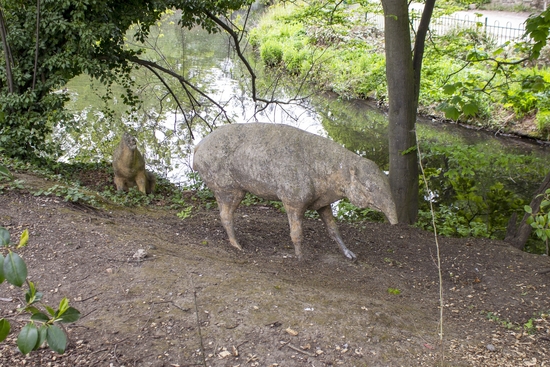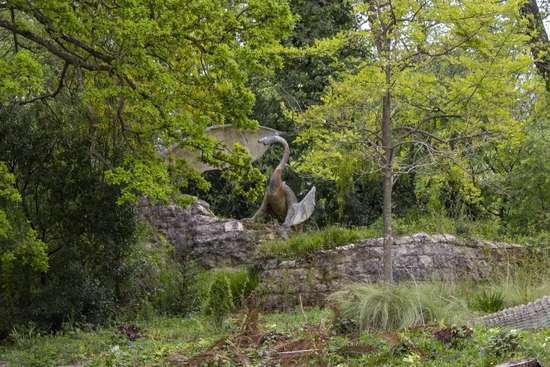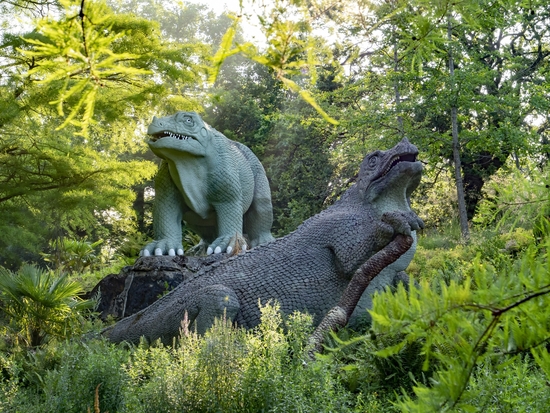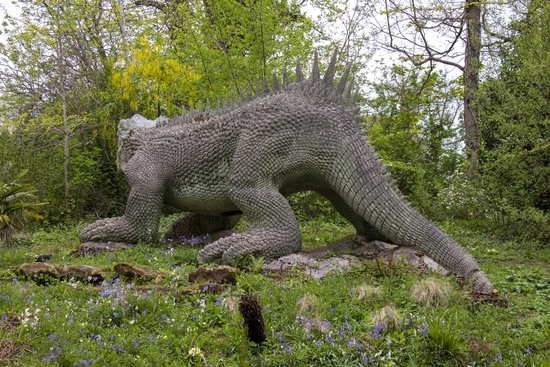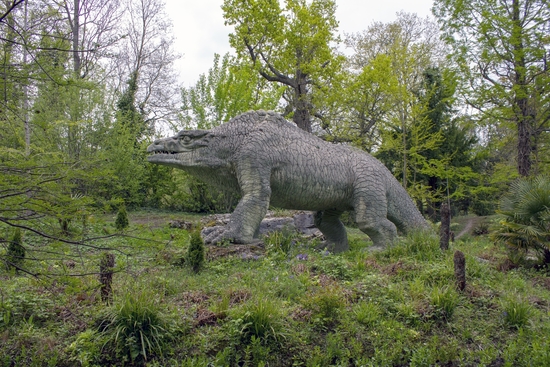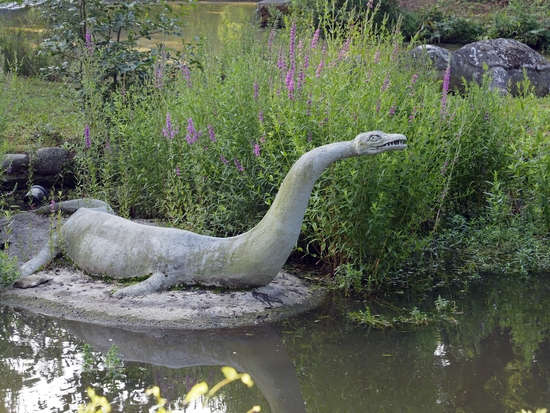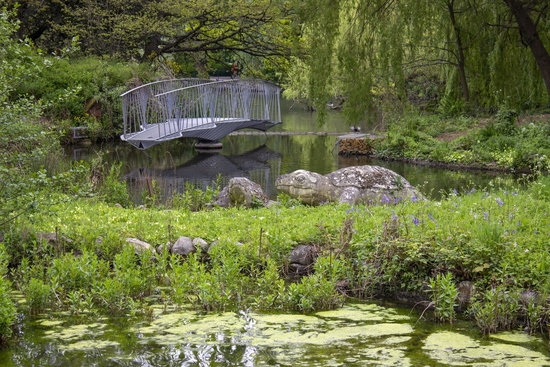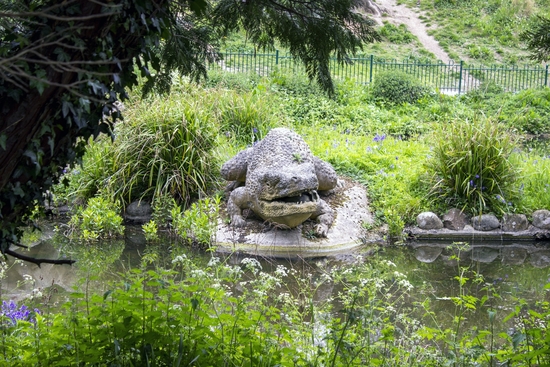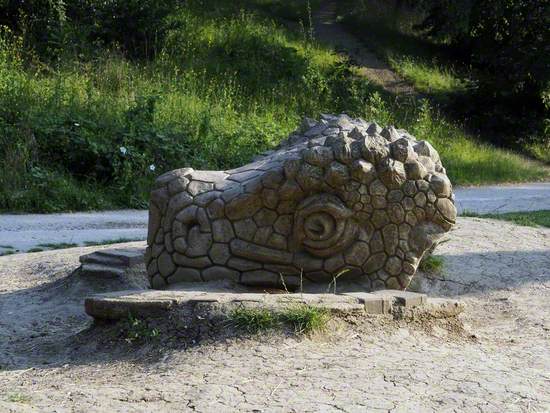This trail meanders through a scenic section of Crystal Palace Park in Bromley, around several lake islands.
The 'Crystal Palace Dinosaur' sculptures, made in the mid-1850s, are scientifically and historically important because they represent the first-ever attempt to model extinct animals as full-scale creatures referencing fossils. They remain mostly intact and in the same positions that the sculptor, Benjamin Waterhouse Hawkins, decided on. They fascinated the public in the nineteenth century, and remain a favourite and iconic fixture of South London.
More information is at http://cpdinosaurs.org and in Mark Witton and Ellinor Michel's book 'The Art and Science of the Crystal Palace Dinosaurs' (The Crowood Press, summer 2022).
Megaloceros 1852–1855
Benjamin Waterhouse Hawkins (1807–1894)
Bricks, iron, stone, steel, tiles, concrete, lead, mortar & paint
Megatherium 1852–1855
Benjamin Waterhouse Hawkins (1807–1894)
Bricks, iron, stone, steel, tiles, concrete, lead, mortar & paint
Mosasaurus 1852–1855
Benjamin Waterhouse Hawkins (1807–1894)
Bricks, iron, stone, steel, tiles, concrete, lead, mortar & paint
Anoplotherium 1852–1855
Benjamin Waterhouse Hawkins (1807–1894)
Bricks, iron, stone, steel, tiles, concrete, lead, mortar & paint
Palaeotherium 1852–1855
Benjamin Waterhouse Hawkins (1807–1894)
Bricks, iron, stone, steel, tiles, concrete, lead, mortar & paint
Pterosaur 1852–1855
Benjamin Waterhouse Hawkins (1807–1894)
Bricks, iron, stone, steel, tiles, concrete, lead, mortar & paint
Iguanodon 1852–1855
Benjamin Waterhouse Hawkins (1807–1894)
Bricks, iron, stone, steel, tiles, concrete, lead, mortar & paint
Hylaeosaurus 1852–1855
Benjamin Waterhouse Hawkins (1807–1894)
Bricks, iron, stone, steel, tiles, concrete, lead, mortar & paint
Megalosaurus 1852–1855
Benjamin Waterhouse Hawkins (1807–1894)
Bricks, iron, stone, steel, tiles, concrete, lead, mortar & paint
Teleosaurus 1852–1855
Benjamin Waterhouse Hawkins (1807–1894)
Bricks, iron, stone, steel, tiles, concrete, lead, mortar & paint
Plesiosaur 1852–1855
Benjamin Waterhouse Hawkins (1807–1894)
Bricks, iron, stone, steel, tiles, concrete, lead, mortar & paint
Ichthyosaur 1852–1855
Benjamin Waterhouse Hawkins (1807–1894)
Bricks, iron, stone, steel, tiles, concrete, lead, mortar & paint
Dicynodon 1852–1855
Benjamin Waterhouse Hawkins (1807–1894)
Bricks, iron, stone, steel, tiles, concrete, lead, mortar & paint
Labyrinthodon 1852–1855
Benjamin Waterhouse Hawkins (1807–1894)
Bricks, iron, stone, steel, tiles, concrete, lead, mortar & paint
Head of a Hylaeosaurus 1852–1855
Benjamin Waterhouse Hawkins (1807–1894)
Stone
H 80 x W 90 x D 100 cm


